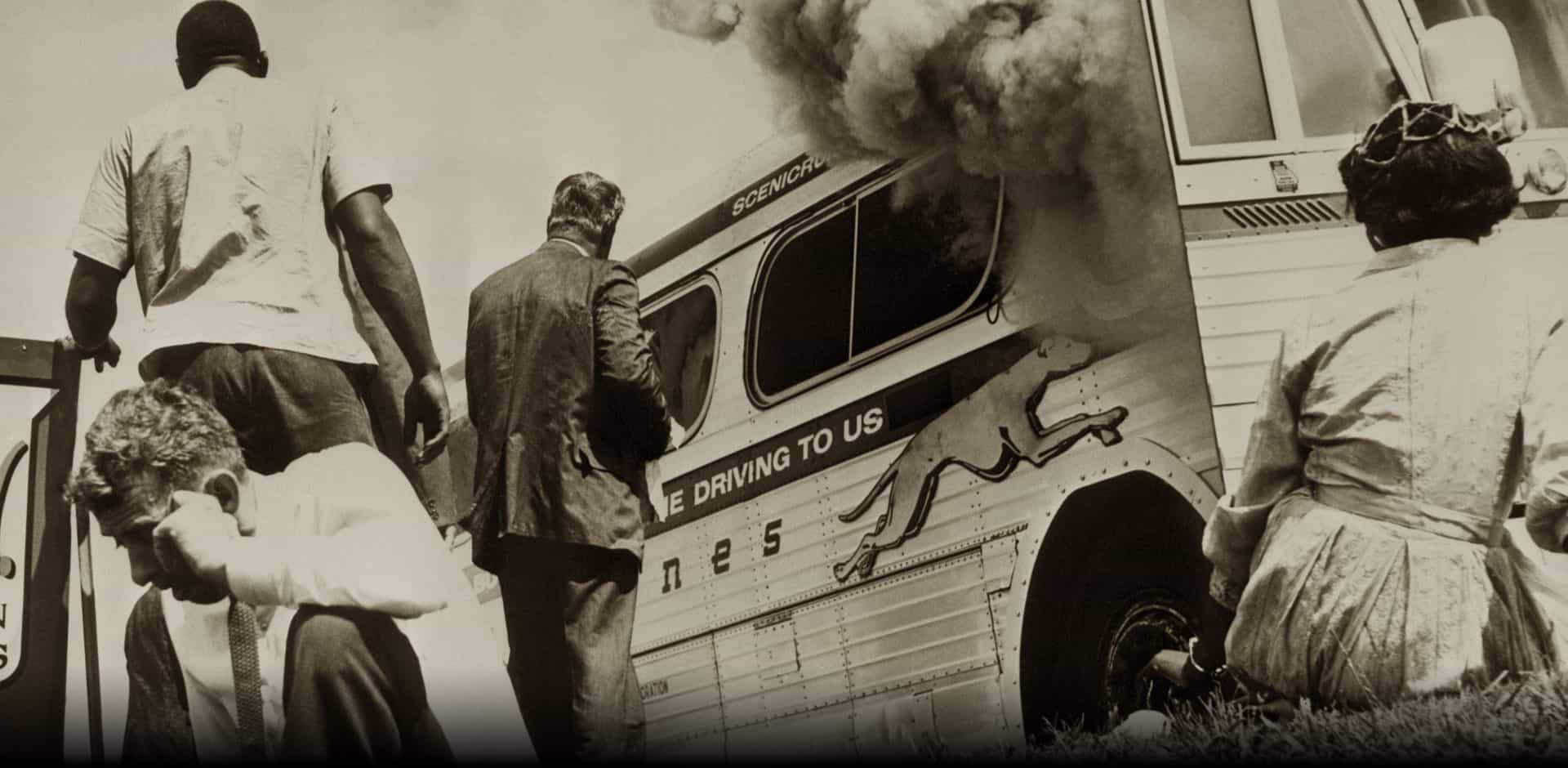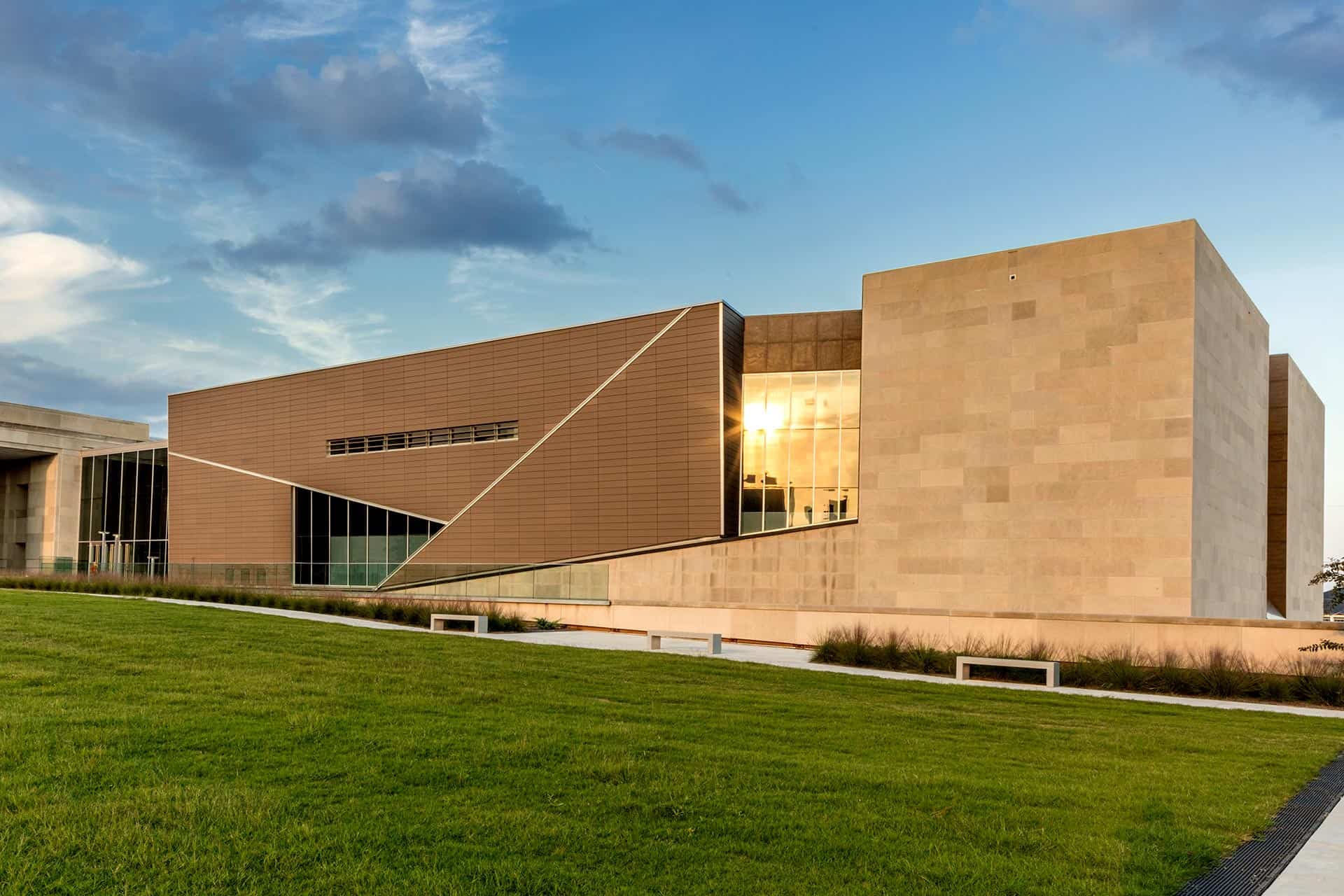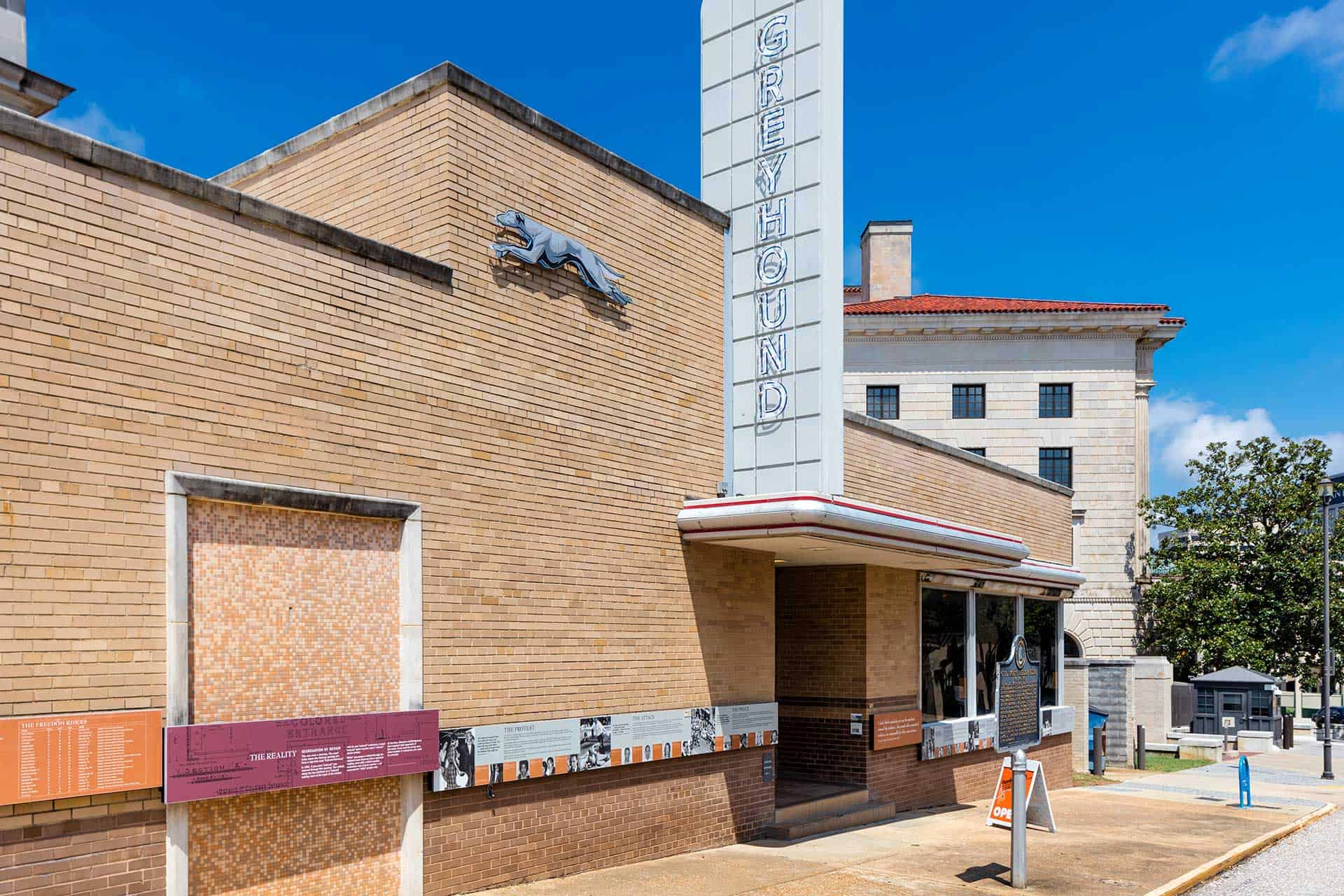Birmingham: Violence at the Trailways Station
Following the infamous burning of the Greyhound bus on May 14, 1961, in Anniston, Alabama, a Trailways bus carrying Freedom Riders arrived in Birmingham, where a mob of Ku Klux Klan members attacked the Freedom Riders with baseball bats and other weapons. The beatings were not just perpetrated against African-American riders; in fact, some white Freedom Riders were singled out and attacked more brutally. Despite the certainty of more violence to come at future destinations, the Freedom Riders continued their journey.
Today, a historic marker commemorates the site in downtown Birmingham where this Trailways bus station once stood.
Nashville: Students Organize and Mobilize
Diane Nash, a leader of the Nashville Student Movement (a group that challenged racial segregation) and the Student Nonviolent Coordinating Committee, urged other students in Nashville to step in and continue the rides across the South. On May 17, 1961, a group of 10 students rode to Birmingham, where they were arrested and then transported to the Tennessee state line where they were left.
Nash attended college at Nashville’s Fisk University. Visit the school, the first African-American institution to receive accreditation from the Southern Association of Colleges and Schools, and see the epicenter of the Nashville Student Movement. Walking the grounds, you also can take in the historic architecture and experience many sites and landmarks of the Civil Rights Movement. A variety of private African-American history tours are available that include Fisk University on their itineraries.
Mob Attacks in Montgomery
On the morning of May 20, 1961, a bus carrying Freedom Riders arrived in Montgomery from Birmingham. A white mob was waiting for the riders at the bus station on South Court Street, and when the bus arrived, the mob beat the exiting riders with baseball bats and iron pipes. Many were injured, some severely, before Black residents of Montgomery stepped in to rescue the Freedom Riders from further violence.
The next day, May 21, more than 1,500 people gathered at First Baptist Church on Ripley Street to hear Dr. Martin Luther King Jr. and other civil rights leaders speak in defense of the Freedom Riders. Again, a mob was waiting. Three thousand people gathered outside the church attacked some of the African-American guests. While the U.S. Marshals Guard was present, the local and state police made little effort to contain the violence, leading President John F. Kennedy to order the Alabama National Guard to break up the mob and protect the Freedom Riders and their supporters.
Today, you can visit the bus station where the Freedom Riders arrived in Montgomery. The station is now the Freedom Rides Museum, and parts have been restored to appear the way they did in 1961. From there, head to First Baptist Church on Ripley Street to see where the Freedom Riders took refuge after the attack at the station.
Filling the Jails in Jackson
A new group of Freedom Riders arrived in Montgomery on May 22, 1961, to replace those who had been wounded, and on May 24, they boarded buses bound for Jackson, Mississippi. The riders were not attacked upon arrival, but they were arrested shortly after when they attempted to use whites-only facilities at the station.
The Freedom Riders adopted a new strategy: “Fill the jails.” When another bus left from Montgomery to Jackson after the first round of arrests, a new pattern was established for rides from this point forward. This time, the Freedom Riders headed to Jackson knowing they would be arrested upon arrival. The arrestees successfully filled the Jackson and Hinds County jails to the point of overflow, after which many were transferred to the infamous Parchman Farm (Mississippi State Penitentiary), where, despite abusive treatment, the Freedom Riders continued singing songs of freedom together.
Today in Jackson, you can discover the legacy of the Freedom Riders as part of the new Mississippi Civil Rights Museum.




























